Garden Guests: Planting to Attract Pollinators
These native SoCal plants will bring plenty of pollinating visitors to your place.
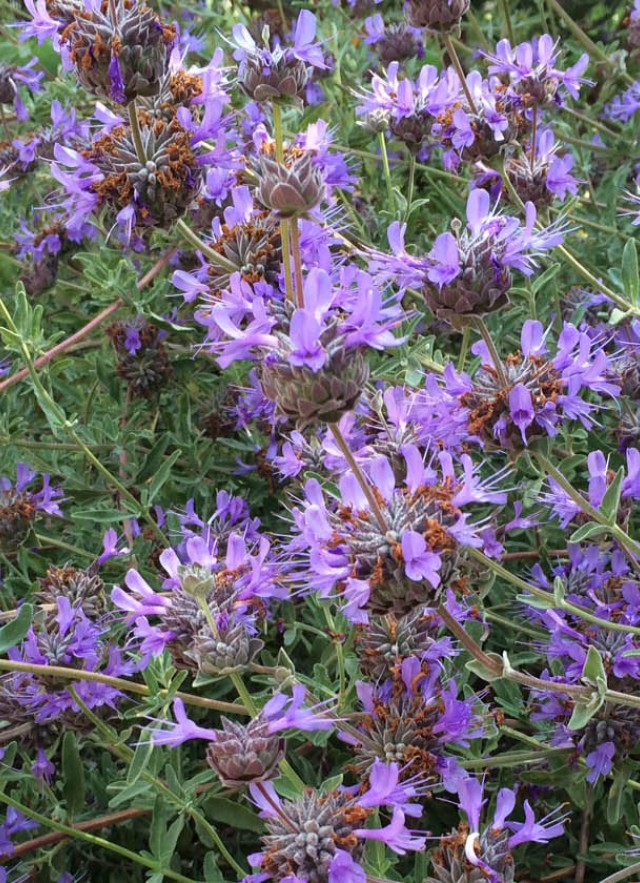
We checked in with NHM's horticulture team to find out what plants are keeping things buzzing.
St. Catherine’s Lace
This wild buckwheat will make pollinators go buck wild in your garden. St. Catherine's lace (Eriogonum giganteum) is endemic to the Channel Islands—meaning it only naturally grows on those islands and nowhere else on the planet—but it can adapt to higher temperatures inland. The native birds, butterflies, and bees it attracts will love the creamy pink and white flowers (you will too!) that bloom throughout most of the year, and the clusters of leathery oval leaves have a particular felt-like appearance. It can grow with your space, from 1.5 feet to 5 feet tall and from 4 to 10 feet wide, and makes a great addition to help your drought-tolerant garden support native pollinators.
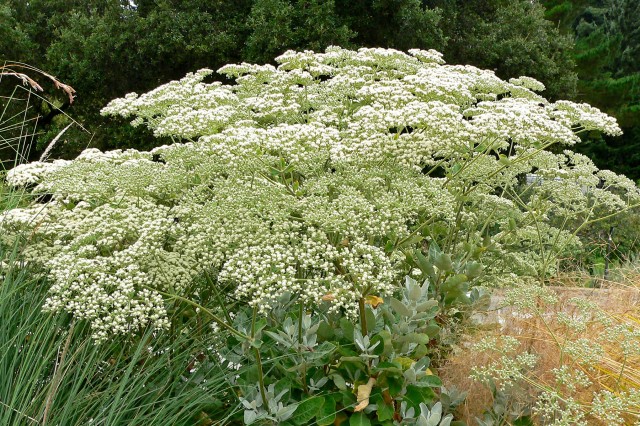
St. Catherine's Lace (Eriogonum giganteum)
Photo by Stan Shebs CC BY-SA 3.0

St. Catherine’s lace (Eriogonum giganteum)
Of the more than 125 species of buckwheat native to California, this is by far the largest. Prized by gardeners for its silvery-gray leaves and massive inflorescence, it is valuable as wildlife habitat, too, offering food for insects, birds, and mammals.
1 of 1
St. Catherine's Lace (Eriogonum giganteum)
Photo by Stan Shebs CC BY-SA 3.0
St. Catherine’s lace (Eriogonum giganteum)
Of the more than 125 species of buckwheat native to California, this is by far the largest. Prized by gardeners for its silvery-gray leaves and massive inflorescence, it is valuable as wildlife habitat, too, offering food for insects, birds, and mammals.
Allen chickering
The Allen Chickering is a hybridization of S. clevelandii and S. leucophylla. This sage’s amethyst blooms start popping up in the late spring and continue into the fall, and these native California shrubs are deliciously fragrant all year round. Their violet-colored flowers are definitely showstoppers, and as sages their leaves are distinctly aromatic (especially when crushed). "Allen Chickering attracts a myriad of pollinators from hummingbirds and goldfinches to bees and butterflies. There aren't a lot of plants with that array of visiting pollinators,” says former NHM Head Gardener Richard Hayden. The goldfinches even help out, letting the Nature Garden team know when it’s time to get to work. “When there’s no more seeds, that’s when we prune it back.”
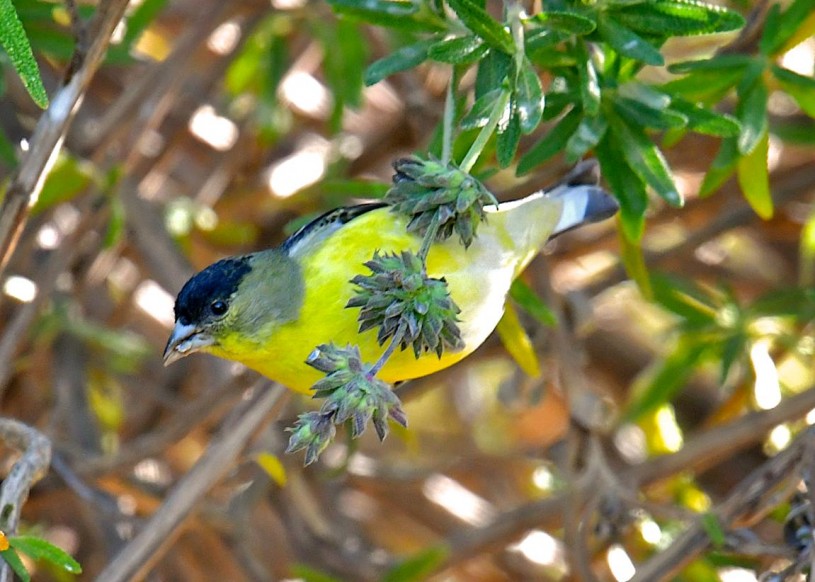
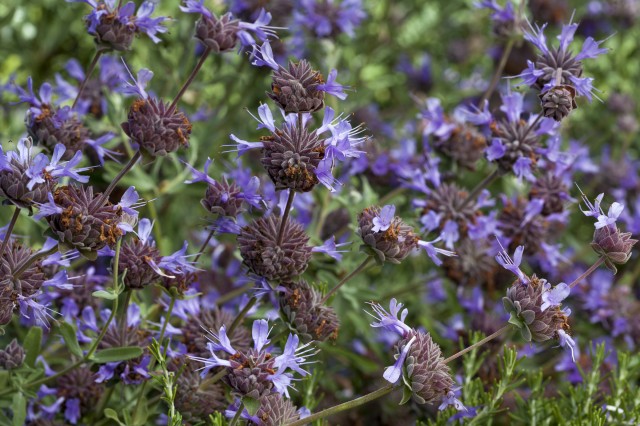
Allen Chickering is a sage, so it looks and smells lovely while it attracts critters.
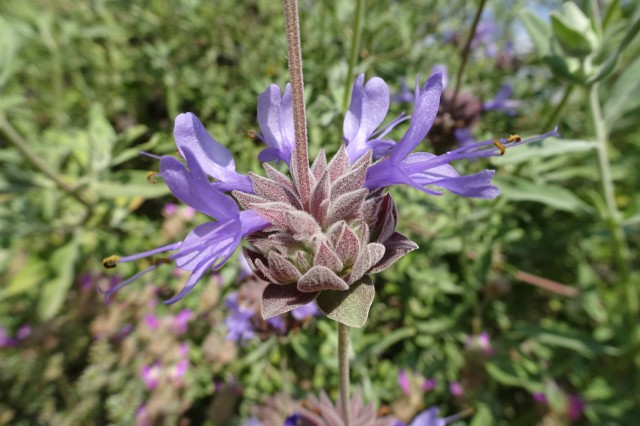
The delicate, lavender blossom of the Allen Chickering is even more alluring close up.
1 of 1
Allen Chickering is a sage, so it looks and smells lovely while it attracts critters.
The delicate, lavender blossom of the Allen Chickering is even more alluring close up.
CEANOTHUS
Whether you call them soap bush, buckbrush, California lilac or plain old ceanothus, these small flowering trees, shrubs and ground cover are great for bringing pollinators into the garden. Their popularity with bees, butterflies and birds makes them perfect for our Pollinator Garden where we’re cultivating several species. Ceanothus' conical flurry of blossoms come in a variety of colors. The Nature Garden hosts several species: Ceanothus maritimus, and Ceanothos megacarpus to name a couple, but Hayden notes that the spectacular 'Concha' ceanothus will be blooming soon. Many species of ceanothus are native to Southern California, so there are plenty of options to get your home buzzing.
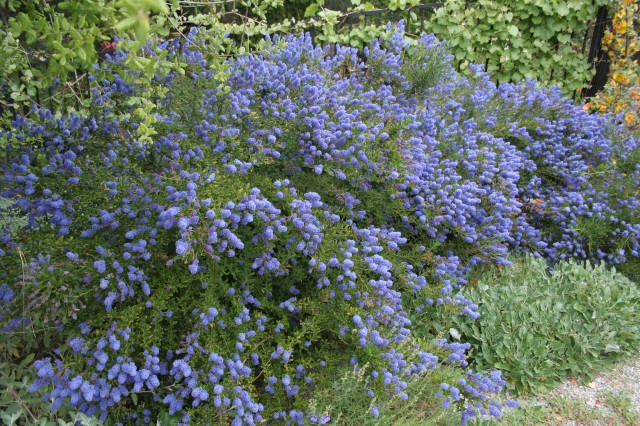
According to Hayden, the Nature Garden's 'Concha' ceanothus should blooming shortly.
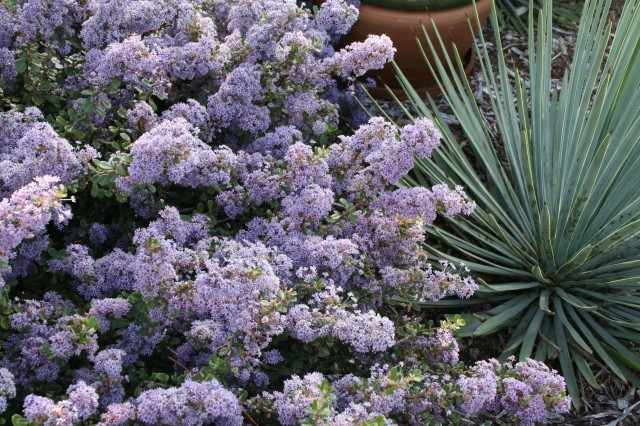
The Nature Garden hosts several types of ceonothus like this gorgeous c. maritimus.
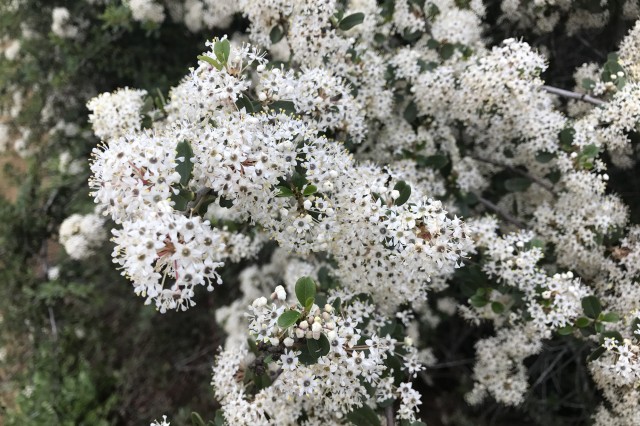
Whatever their color, ceanothus like this c. megacarpus are sure enliven your garden.
1 of 1
According to Hayden, the Nature Garden's 'Concha' ceanothus should blooming shortly.
The Nature Garden hosts several types of ceonothus like this gorgeous c. maritimus.
Whatever their color, ceanothus like this c. megacarpus are sure enliven your garden.
Coyote Brush
Coyote Brush—or Baccharis pilularis—stays green year-round, and its dense structure provides an excellent habitat for lots of different critters. These verdant shrubs host small mammals who get protection from the dense foliage and dine in on any plants that might pop up underneath. While not the preferred meal for many grazing mammals, it does an amazing job of attracting pollinators with an abundance of nectar and pollen. Besides the European honeybee, 54 species of insects have been documented buzzing around coyote brush, so it’s easy to see why it’s one of NHM’s Entomology Curator Dr. Brian Brown’s favorites.
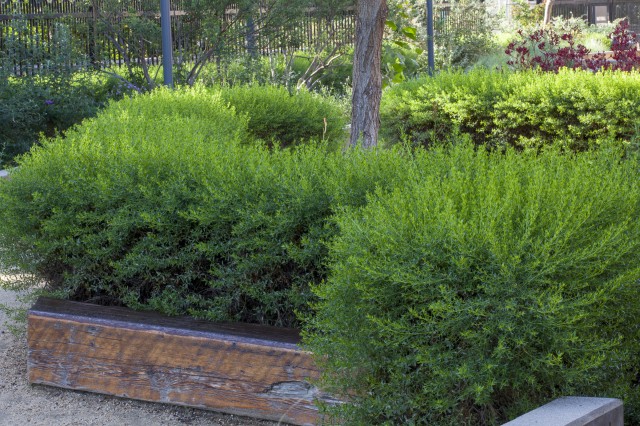
Coyote brush has been documented attracting 54 different insect species.
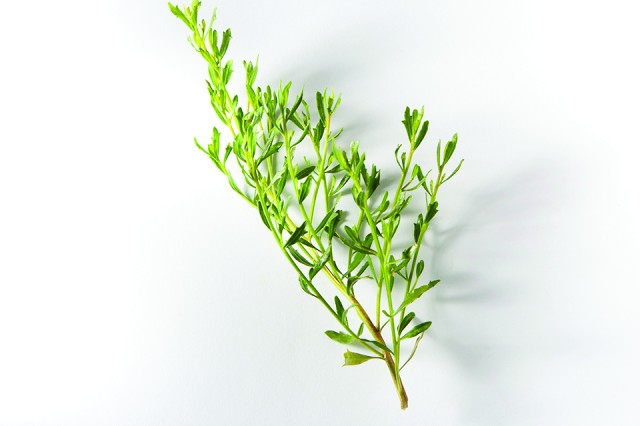
The dense structure of Coyotebrush offers a cozy ceiling for small mammals.
1 of 1
Coyote brush has been documented attracting 54 different insect species.
The dense structure of Coyotebrush offers a cozy ceiling for small mammals.
Chalk Liveforever
While they might look a little shriveled in the Los Angeles summer, and who doesn’t, the Chalk Liveforever (Dudleya pulverulenta) is one hardy succulent. You could almost say it… lives for a very long time. The fine chalky white powder covering its fleshy leaves is responsible for the second half of the name. These beautiful rosettes are stunning all on their own, but later in the spring, they send out a long, arching vibrant pink flower that’s practically a hummingbird magnet. They’re also perfect for container growing or planting in rocks, like in the Nature Garden’s Living Wall.
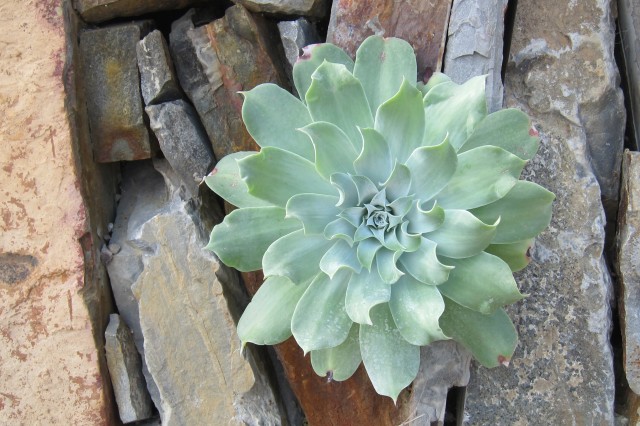
Chalk liveforevers are perfect for small spaces.
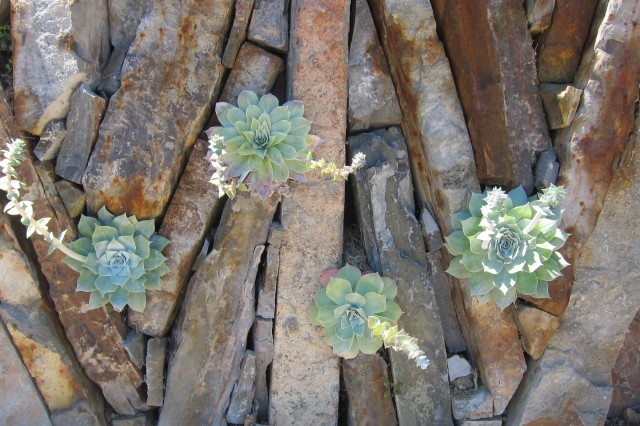
These succulents flower into veritable hummingbird magnets.
1 of 1
Chalk liveforevers are perfect for small spaces.
These succulents flower into veritable hummingbird magnets.
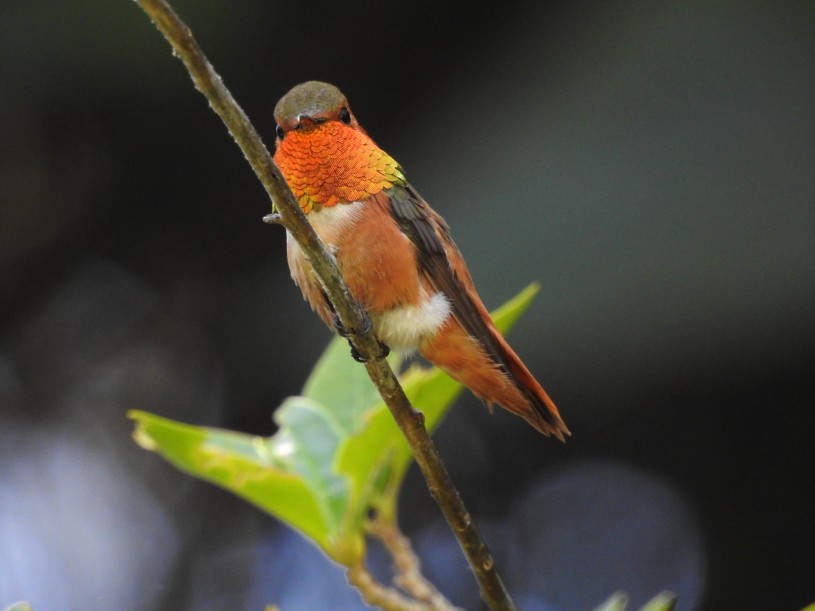
image by iNaturalist user Andy Kleinhesselink
TOYON
The Toyon (Heteromeles arbutifolia) is most easily recognizable by the bright red berry-like fruit that inspires its other common names: the California Holly and the Christmas berry. These perennial, drought-adapted shrubs grow quickly at home, reaching as high as eight feet in a couple of years, but some amazing specimens in the Los Padres National Forest have been documented at 30 feet. Not bad for a shrub! Their fruit are favorites of avian Angelenos like the cedar waxwing, and Toyon also attracts four species of butterflies and moths. Their crimson fruit adds a festive feel to any garden, including ours.
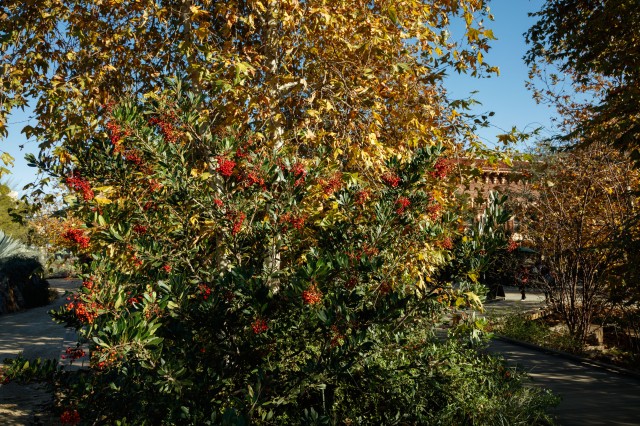
Fast growing and hardy, toyon is a reliable plant for attracting pollinators.
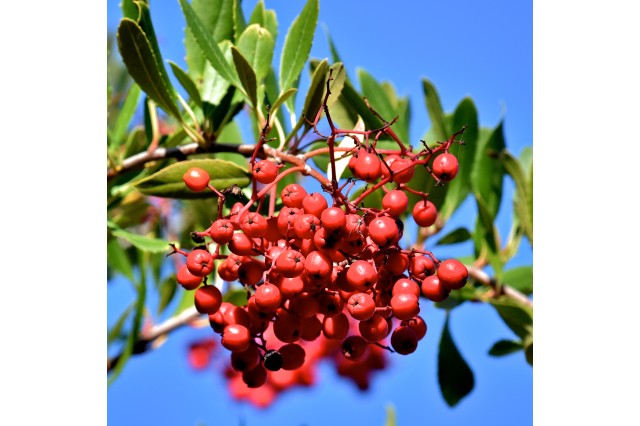
Birds love toyon's bright red berries.
1 of 1
Fast growing and hardy, toyon is a reliable plant for attracting pollinators.
Birds love toyon's bright red berries.
Whether you can make it to your closest green space or your local nursery, keep an eye out for these native plants. Sit and watch a while, and you’re likely to see wildlife of many stripes (and spots) stop by for a drink or a meal. Be sure to check in for more gardening guidance, and you might just end up turning your yard, balcony, or window sill into a pollinator hot spot.
A big thanks to our sponsor

